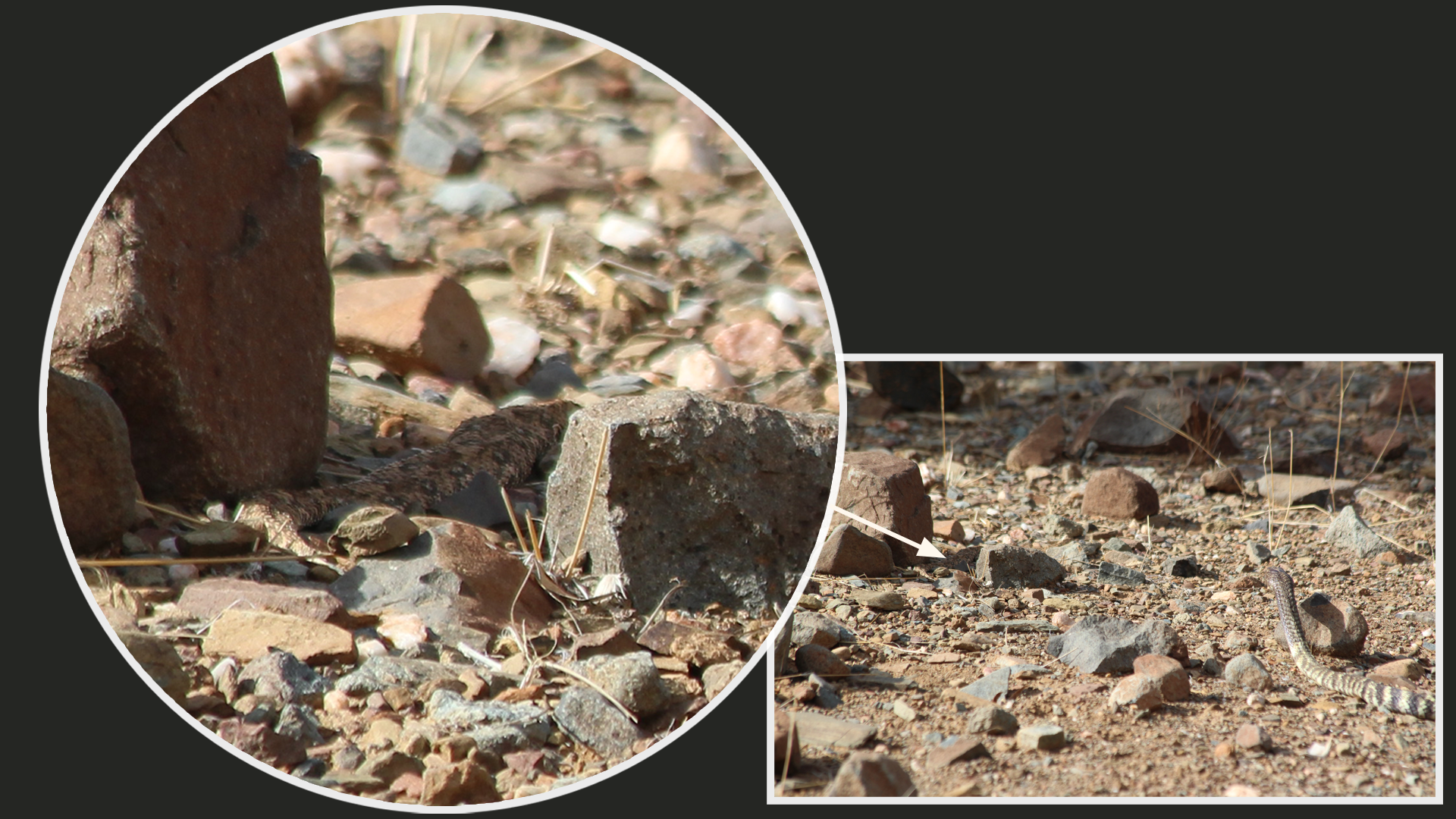Field Notes
Reptiles
January 2024
On a morning walk in the veld I witnessed a very interesting interaction between two snakes.
My attention was caught by a large Western Banded Spitting Cobra (Naja nigricollis nigricincta) lying across an old car path.
I took some photos and out of my peripheral vision noticed a movement next to some rocks in the direction the cobra was facing. After I had a look through my binoculars, I identified a second snake, its body writhing and clearly being watched closely by the cobra.
The cobra was now in motion again. It moved forward towards the other snake and slithered onto its body, lay there for a moment and slithered back again. All of this was observed through my binoculars.
The cobra backtracked its direction and was now facing me and unfortunately my ancient fear got the better of me and I decided to retreat.
Spotting the Western Banded Spitting Cobra on the car path.
Looking at the photos I took of the snake encounter, the second snake was identified as a Puff Adder (Bitis arietans). Reading more on the topic of snakes in Alfred Schleicher’s book ‘Reptilien Namibias’, it became clear that snakes eating other snakes is a common occurrence in the wild.
A few questions come to mind here: From my observation of the uncommon writhing movements of the Puff Adder, we can deduce that the Western Banded Spitting Cobra had bitten the Puff Adder and that the latter was in the process of dying. But had the Puff Adder bitten the cobra too? Is there a ‘fight’ amongst the snakes, or does one ambush the other? And does the cobra have more poisonous venom than the Puff Adder and will not die, even if bitten by the Puff Adder?
The cobra approaches the Puff Adder. Can you spot the latter?
…The Puff Adder is lying to the right of the big rocks. What must have happened before I appeared on the scene? And what happened after I left?
(ID)




